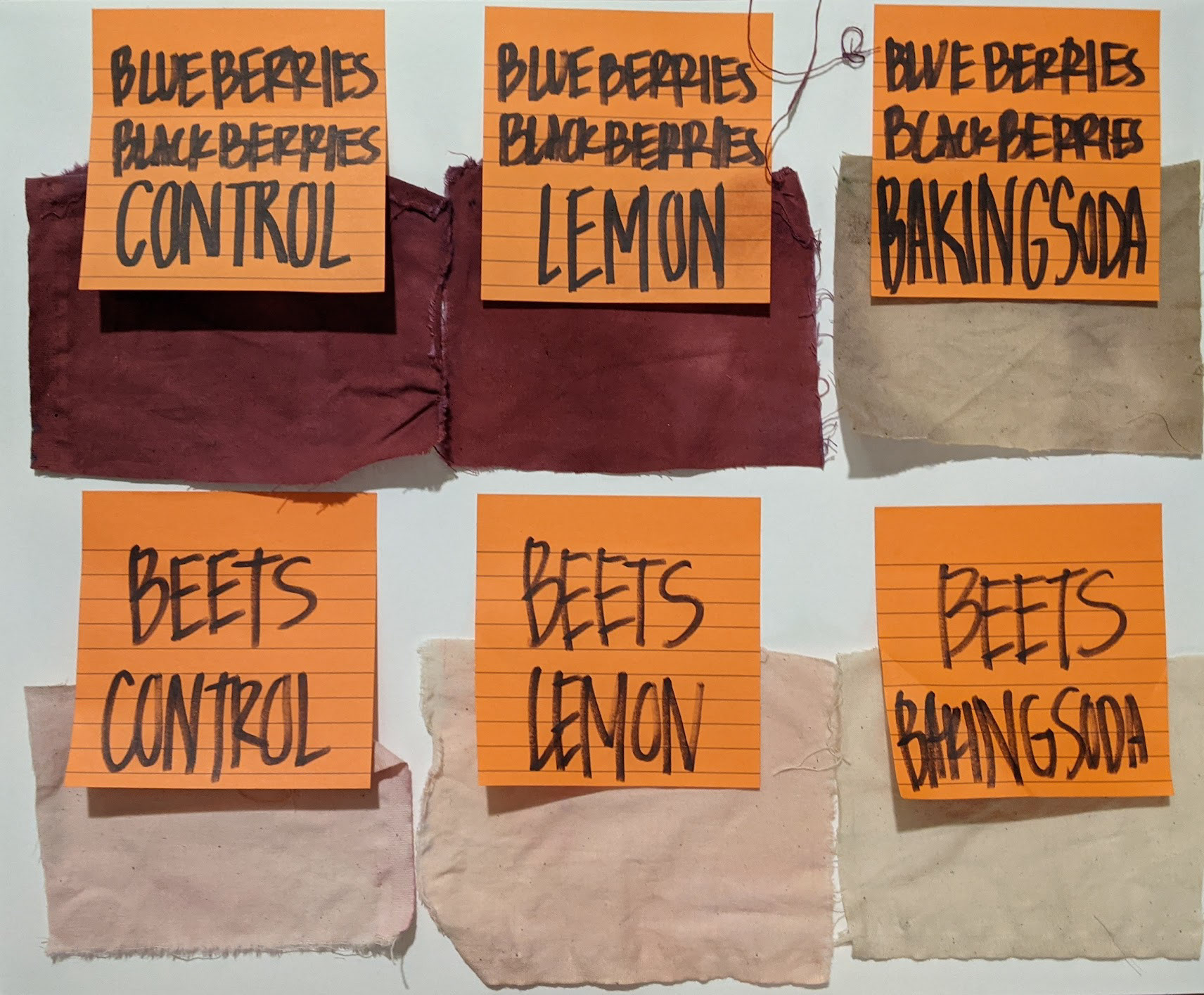
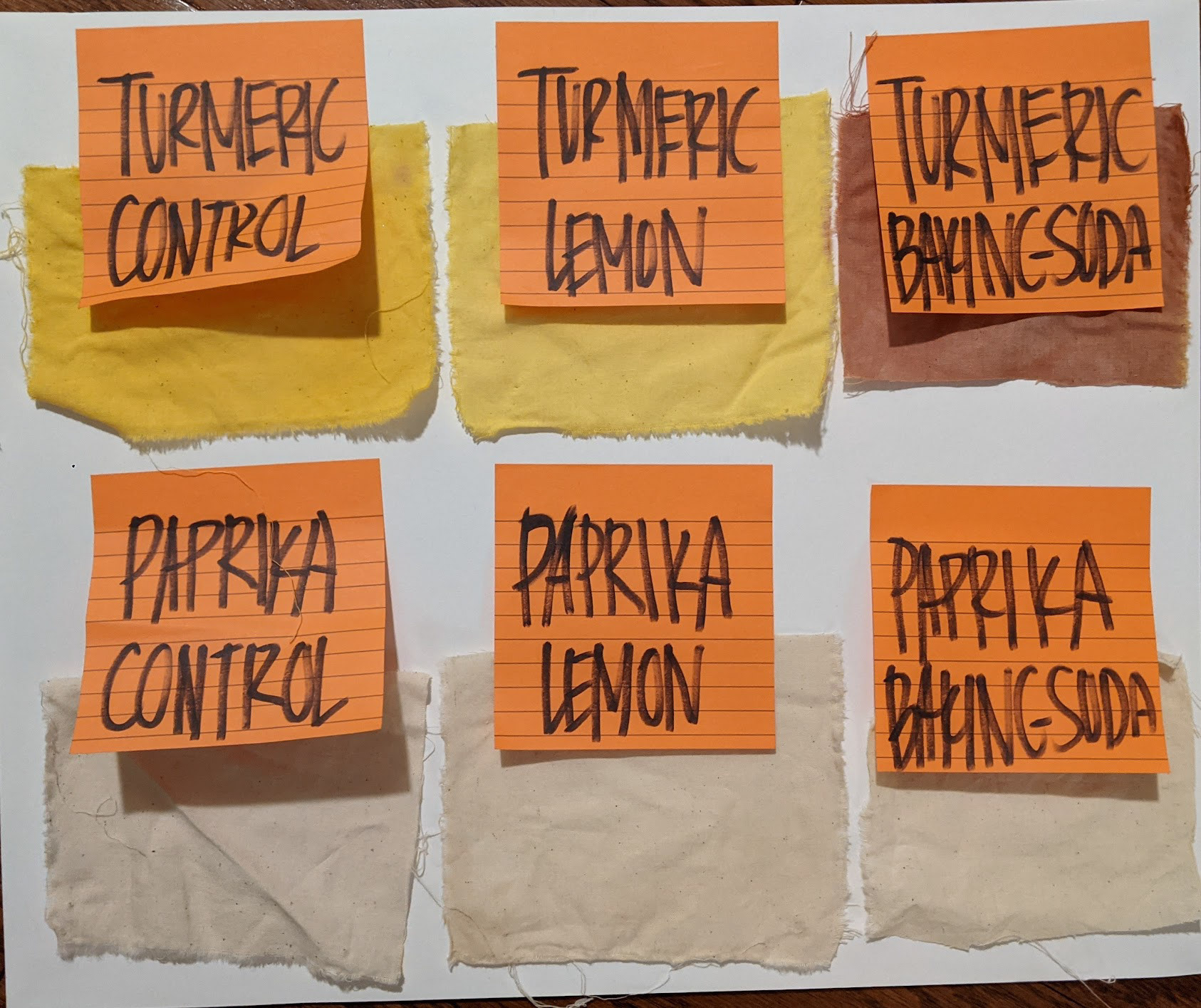

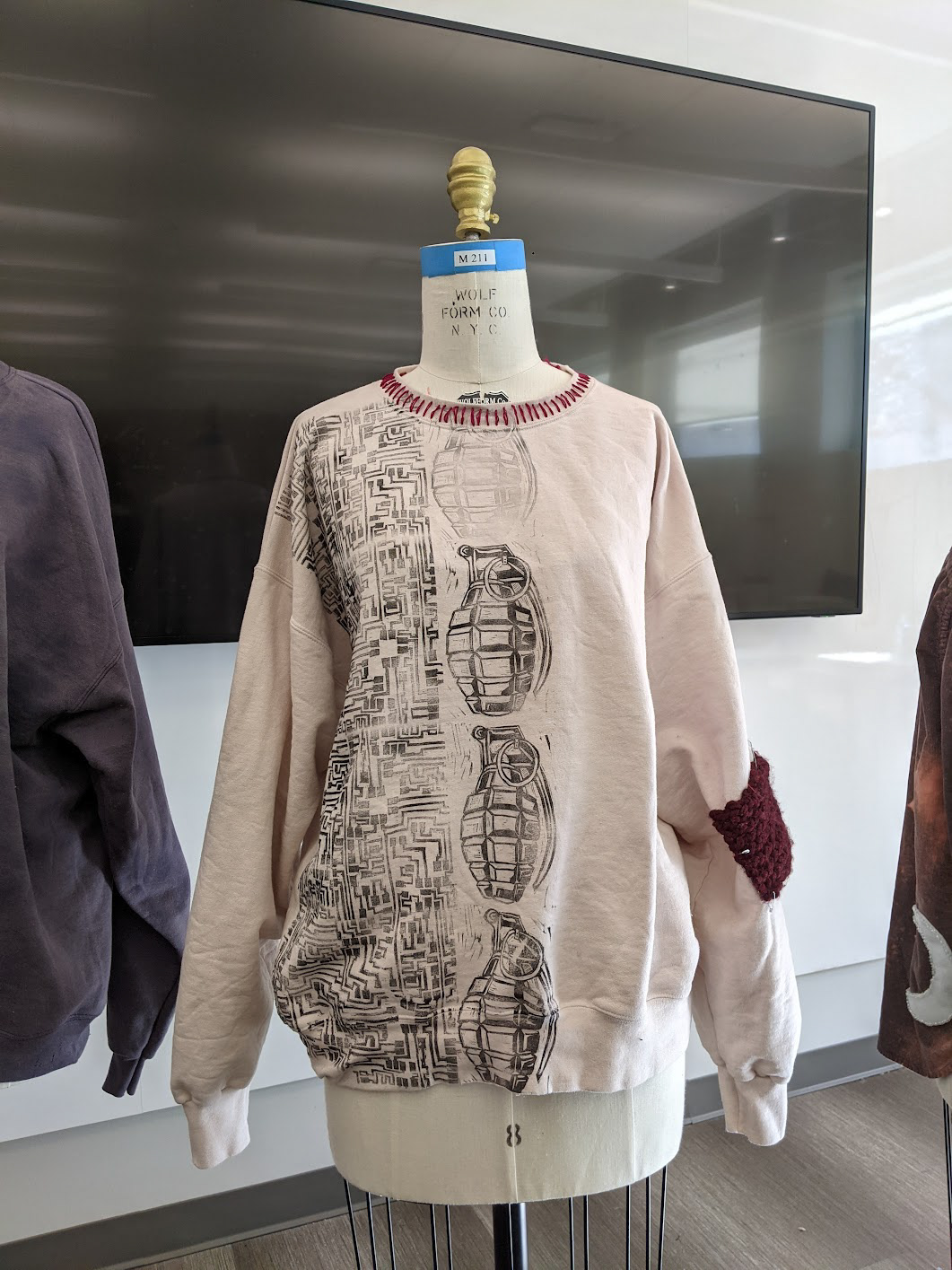
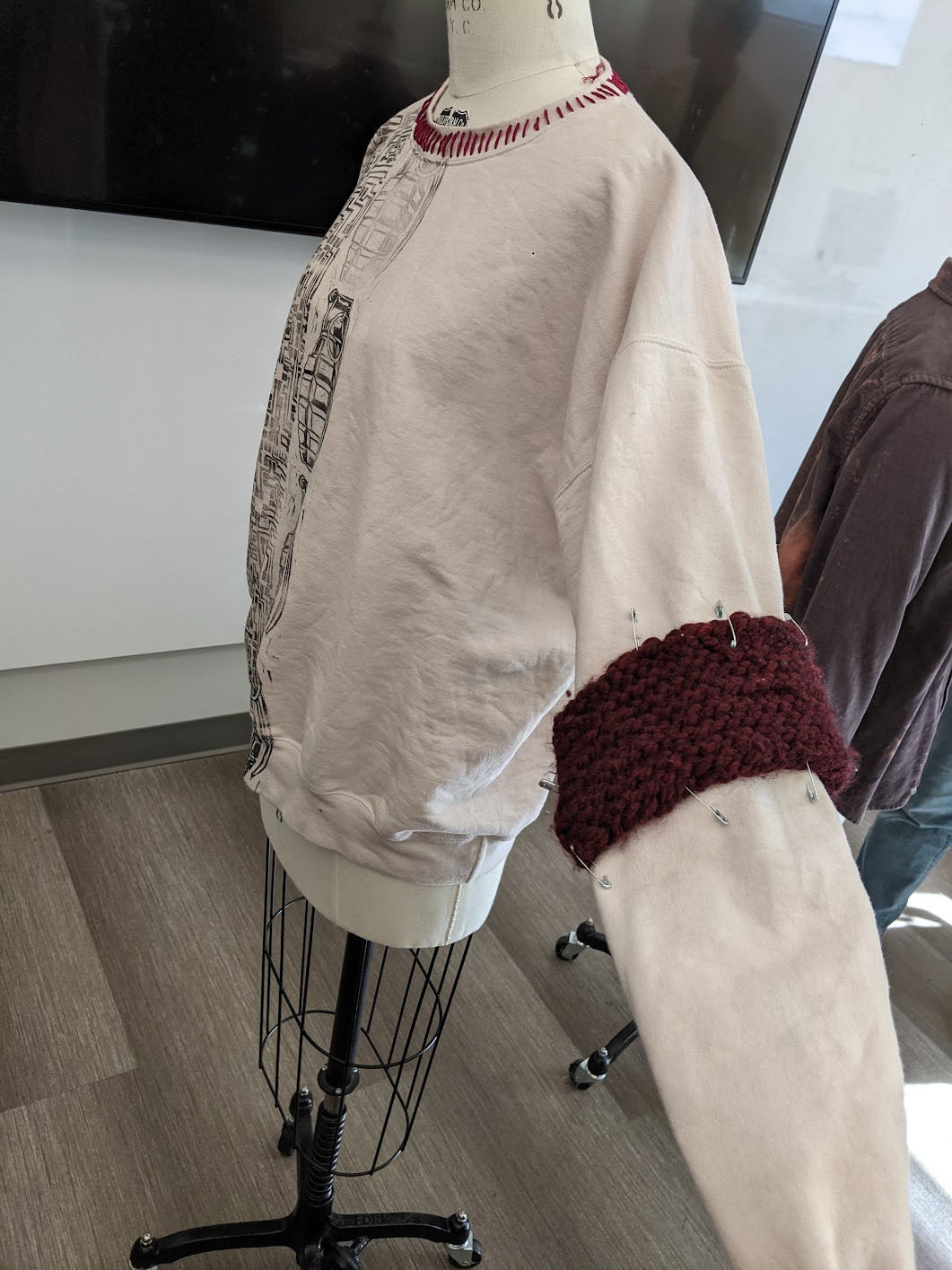
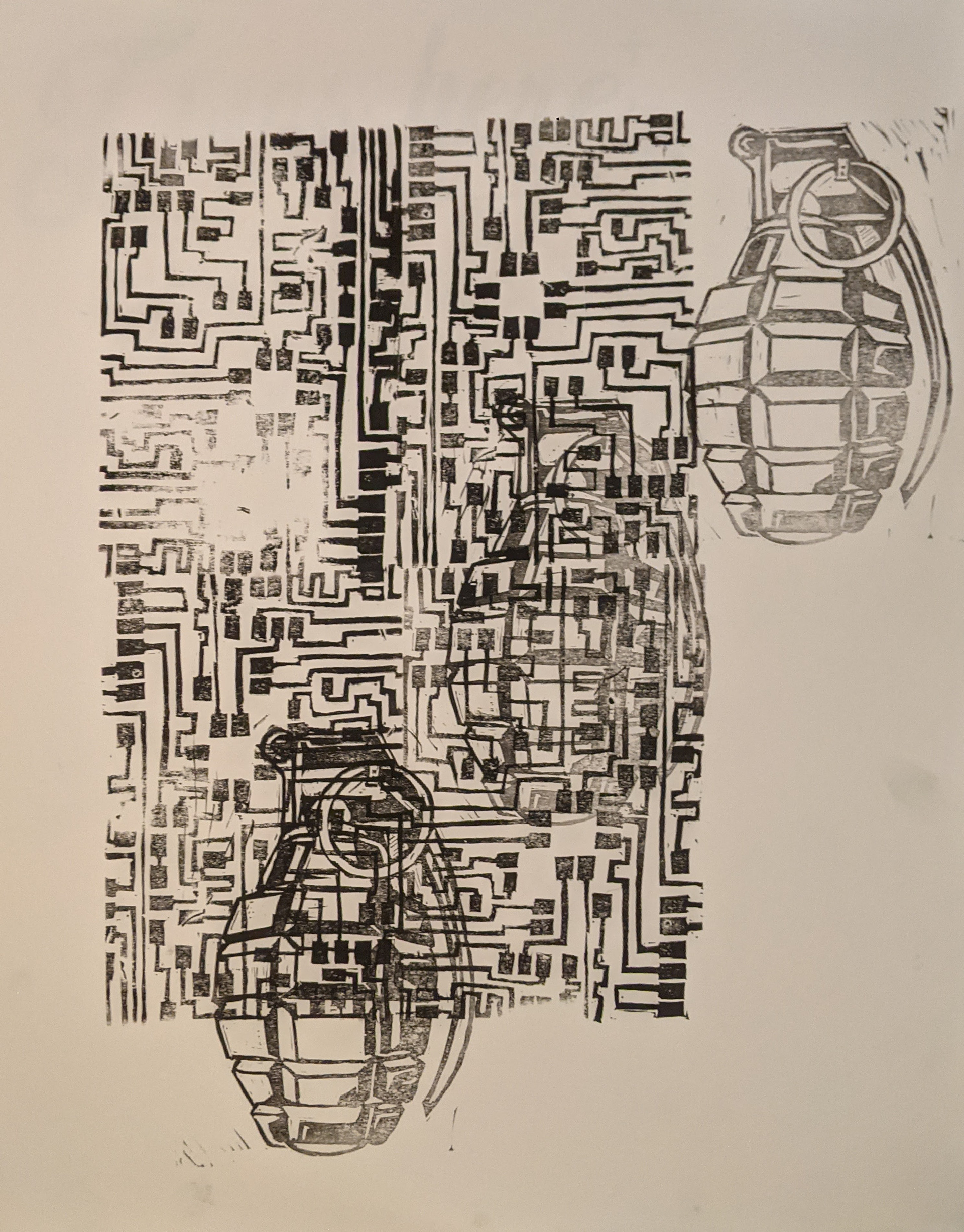
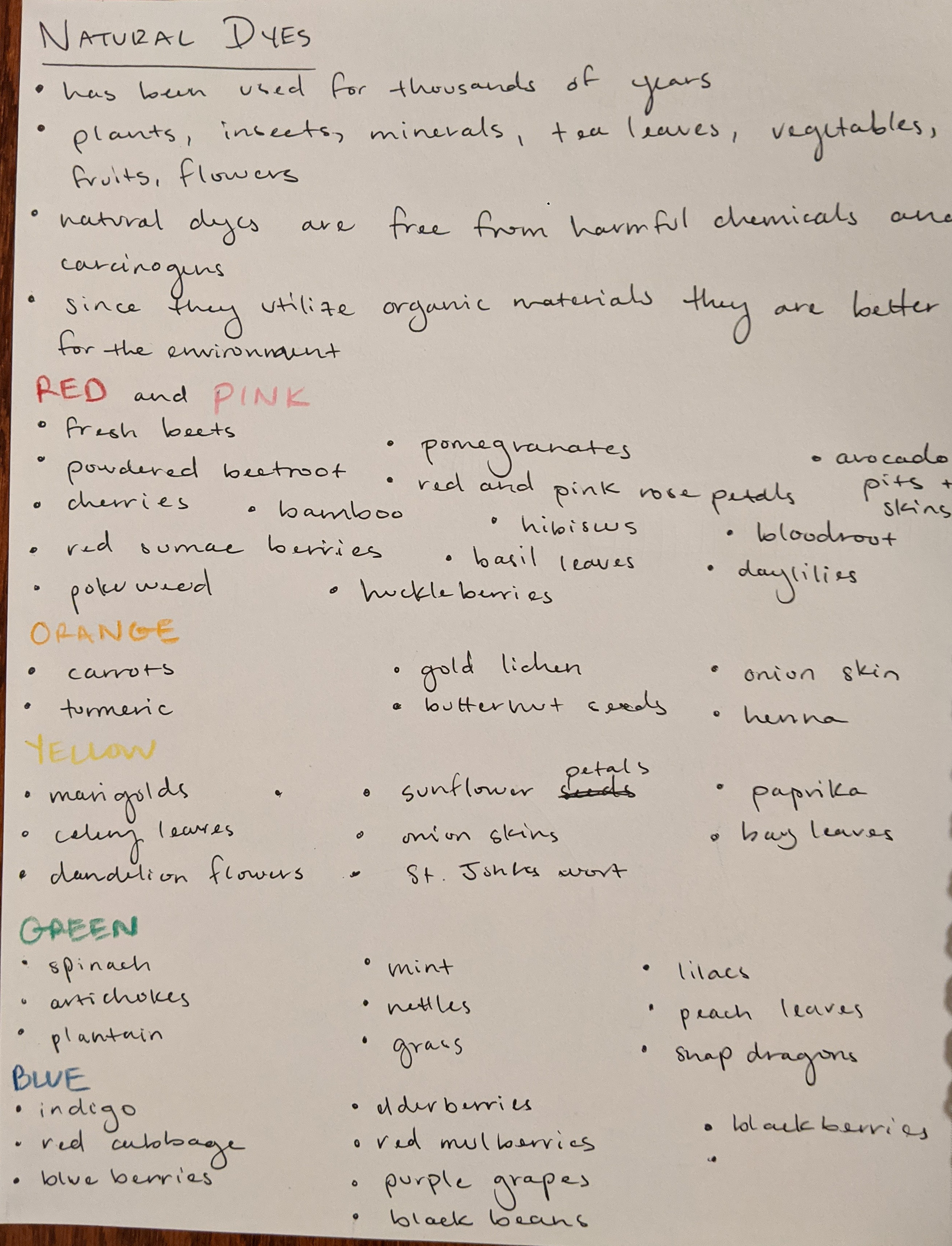
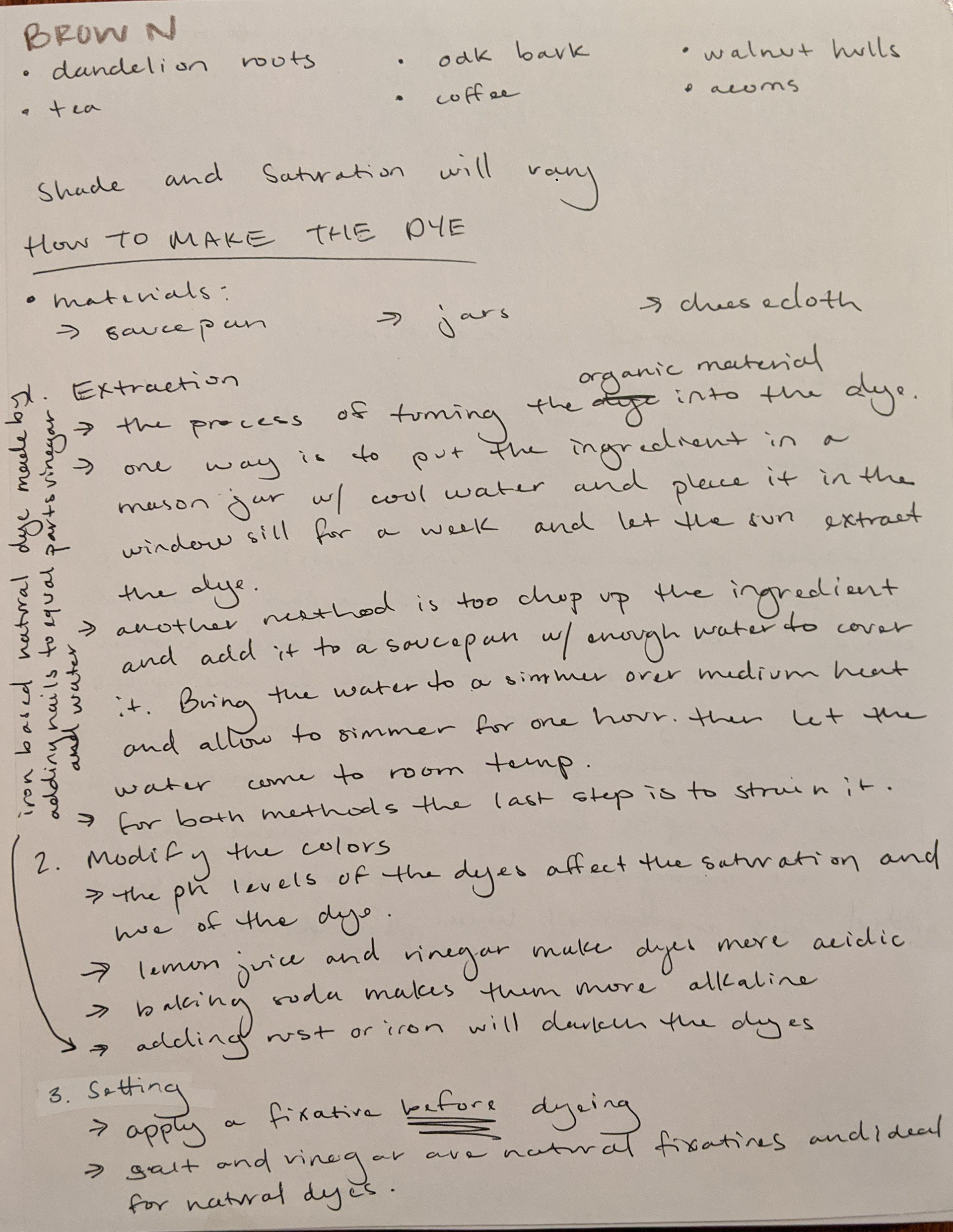
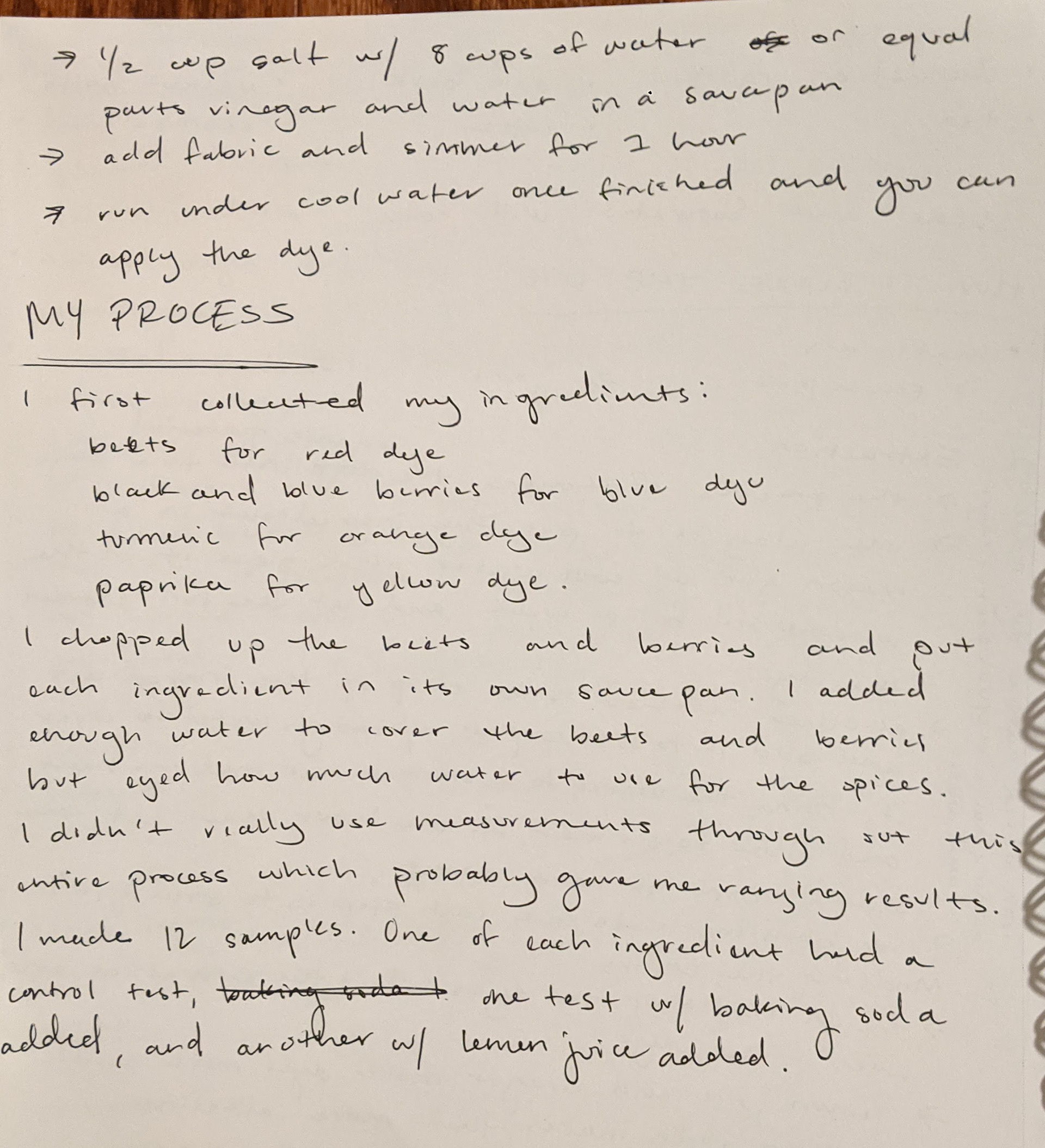
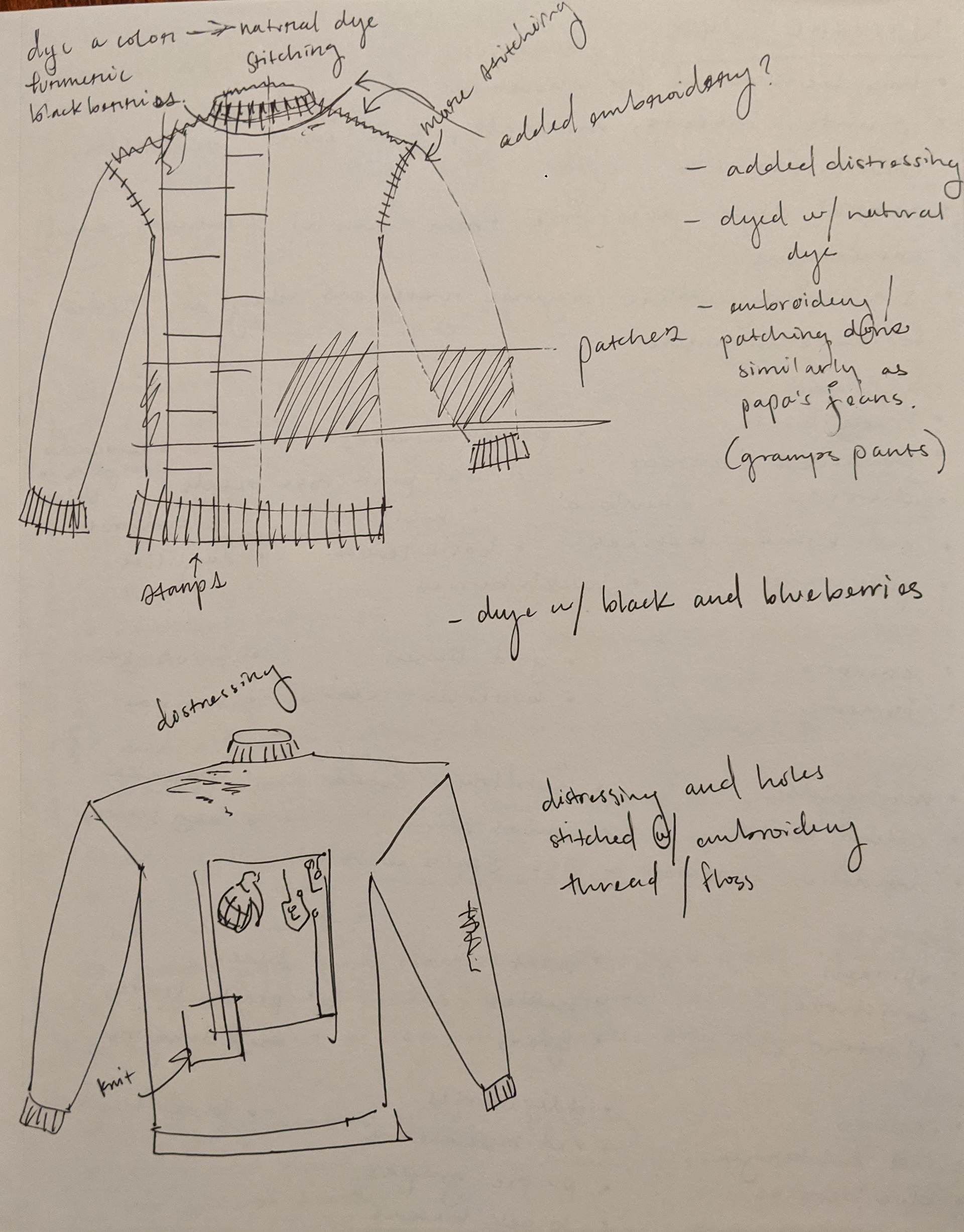
This was a project I worked on for my Intro to Textiles class in which I experimented with natural dyes and fabric manipulations. The inspiration for the stamped pattern was circuit boards found in computers. I hand carved these stamps from linoleum blocks. I used a basic hemming stitch around the collar and knitted patch for the left elbow.
The focus of this project was to explore fabric manipulations, including dying, draping, and embroidery. I decided to focus on natural dyes as they have always fascinated me. You can achieve a wide range of colors using only natural dyes. Each dye can also bring unique properties, like scent or texture. I chose to use beets to make a red dye, black and blueberries for a blue dye, turmeric for an orange dye, and paprika for a yellow dye. I used muslin to test these dyes on. I made three test swatches for each dye, one as a control with no extra additives, one with baking soda added to make the dye more alkaline creating "colder" shades, and the last with lemon juice added to make the dye more acidic creating "warmer" shades.
The process of making the dyes was very simple. First, I chopped the ingredients and added them to a saucepan with enough water to cover them. For the paprika and turmeric, I added about 1/4 cup of the spice into the sauce man with about 3 cups of water. I brought the saucepan to a simmer on medium heat and allowed the ingredients to steep for an hour. I then let the water to cool and strained with a cheese cloth. While I let the water cool, I made a fixative for the fabric so the dyes would correctly absorb into the muslin. Vinegar or salt are the best for natural dyes. I used equal parts white distilled vinegar with equal parts water on the fabric and let it simmer in a saucepan for 1 hour. When the fixative was applied, I ran the muslin under cool water and let airdry before adding the swatches to their dyes. The muslin absorbed the dye for 24 hours before I hand washed the swatches and air dried.
The results of the dyes were quite surprising. The blackberry and blueberry dye came out more as a deep reddish-pink than blue, compared to the beets which came out as a light pink instead of the bright red I was expecting. The baking soda had a profound effect on the color and shade of the dyes. The baking soda with the black and blue berries made an almost grey color. The baking soda with the turmeric made a burnt orange which was closer to what I had expected from the control dye. The control and lemon juice turmeric dyes created a lighter orange-yellow color. The paprika dyes had the least effect on the muslin. I think I either did not add enough paprika to the dye or the dye did not absorb correctly into the fabric. I decided to dye my hoodie with the black and blueberry baking soda dye. This time I added less baking soda so it would still maintain the pink of the berries.
I created a hand-carved stamp inspired by circuit boards and a grenade stamp to print onto the hoodie. It tied technology and nature together, creating a dialogue between the two. Tech can enhance our understanding of natural processes, leading to innovation in sustainable practices, conservation efforts, and more efficient resource management. Conversely, technology can disrupt natural systems. For example, industrial practices, urbanization, and pollution. I wanted to highlight the need for a thoughtful approach to technological development, especially in the fashion world, which is known for using unsustainable practices. Technology used for war can have devastating effects on human populations and natural environments. The world is not at peace. War, poverty, starvation, and disease is all over the world. The biggest exporters of textiles and apparel see a lot of this as many of them are developing countries. I wanted this hoodie to create a conversation about current state of the fashion industry and how technology plays a huge role.
